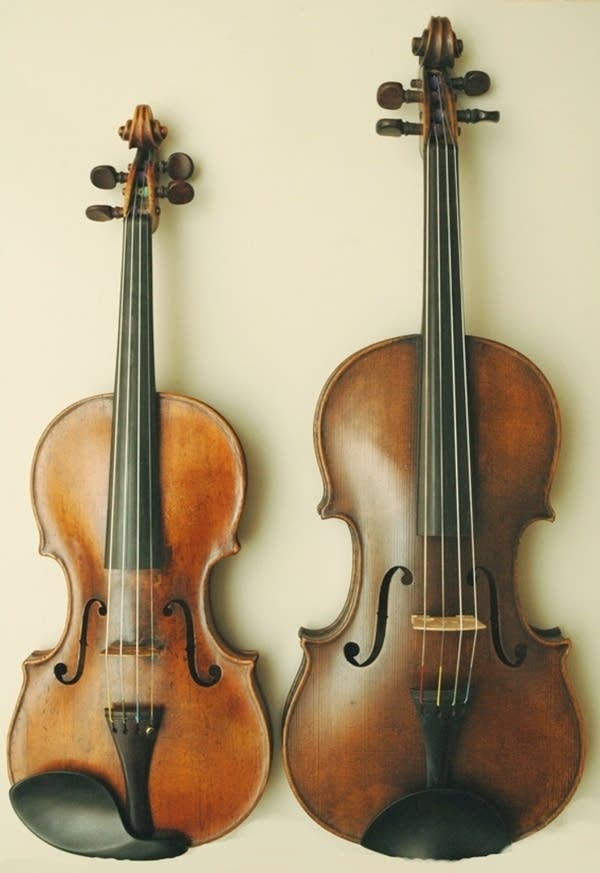Instrument Exploration: Viola

Age Range: Elementary, Grades K-6
Learning Objective: Students will learn to identify the viola by sight and sound.
Total Video Time: 10:05 or 12:21, depending on video chosen in “explore” section
Total Lesson Time: Approximately 20 minutes
INTRODUCE the viola
Look at the two instruments in the picture below. Do you think the instruments are the same? Can you name some similarities? Do you notice any differences?

EXPLORE the sound of the viola
The smaller instrument in the picture is the violin. The slightly larger instrument is the viola (vee-OH-lah). The viola is a member of the string family. It looks a lot like the violin. Since it is slightly bigger than the violin, it can play a little lower - but not quite as high.
Watch this video about the viola, featuring Kirsti from the Lux String Quartet.
Show this 5-minute video, Capriccio in C minor, Op. 55, or this 7-minute video, Peace, both featuring young violist Steven Baloue.
Write down or tell someone three things you learned about the viola.
EXTEND learning
Choose one or both of the following activities to extend learning.
Watch violist Valerie talk about the viola. She explains the technique sul ponticello. Ask students if they can explain what that means and describe how it sounded.
Play a round of “Name That String Instrument.” Remind students that the cello shares the same shape as the violin and viola, but is even bigger, and therefore lower.
Choose pieces for solo violin, viola, or cello and ask students to guess which instrument they hear. Ask them to explain their answers. Use this playlist or create your own.

YourClassical is a public media organization and your support makes it possible.

This activity is made possible in part by the Minnesota Legacy Amendment’s Arts & Cultural Heritage Fund.








